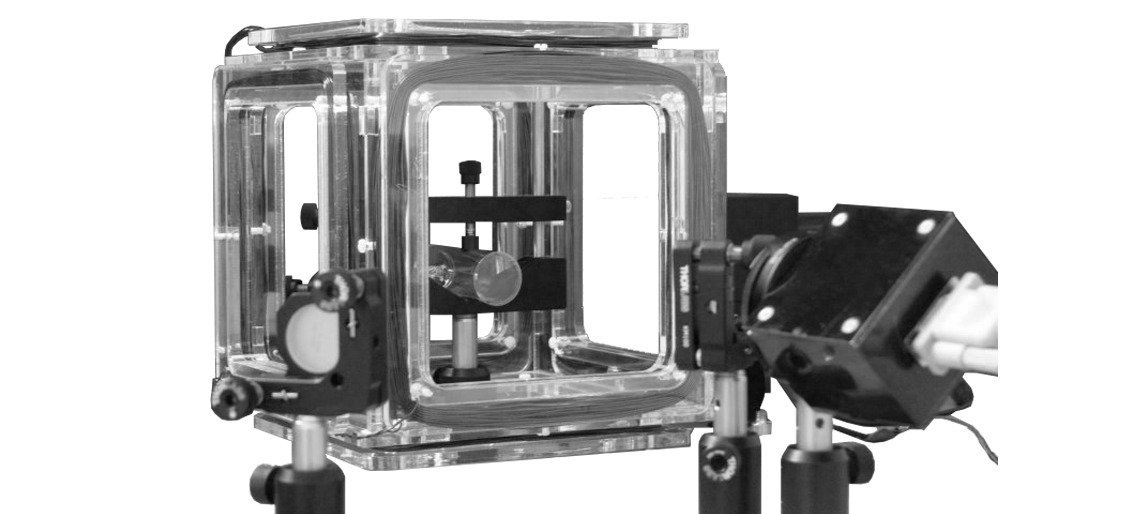Laser spectroscopy kit
Couldn't load pickup availability
Delivery and Shipping to EU
Delivery and Shipping to EU
We will add in the quotation, the shipping, insurance, customs clearance costs.
Laser spectroscopy kit
Instytut Fotonowy
Description
Laser spectroscopy kit will let you to:
See the structure of the D2 transition,
52S1/2 -> 52P3/2 in Rubidium
Demonstrate absorption spectroscopy
– which reveals the hyperfine structure of a ground state
Perform saturated spectroscopy,
– to learn hyperfine structure of an excited state
Determine frequency scale,
– where laser is tuned with a Michelson interferometer
Demonstrate the Zeeman effect
– by measurement of magnetorotation about absorption lines – Maculoso-Corbino Effect
Perform isotopic analysis of Rubidium
– by absorbance measurement of 85Rb and 87Rb isotopes

Specification
Our ECDL Spectroscopy Kit includes:
External Cavity Diode Laser in Littrow configuration,
with the beam rotation at tuning cancelled
Complete laser driver set in the euro subrack housing, consisting of the following modules:
– Current stabilized from 0 to 200 mA(other ranges available), 30nA RMS noise, max. 20ppm / K drift
– Multi-turn knob for adjusting current, red LED laser-on indicator
– On-board adjustable current limit
– Diode current high frequency modulation (up to 100MHz) with 50-ohm BNC connector
– Additional BNC connector configurable as input: current modulation 1mA/V; current setting (knob override) 20 mA / V; output of laser photodiode current or laser current noise monitor
Laser temperature stabilisation block
– Temperature setting by multi-turn knob,
– Very high stability – 3mK RMS (15 min)
– Bipolar TEC control (heating and cooling) with a maximum current of 4 A and a voltage of 6 V with current limit ability (separate for cooling and heating),
– Separately adjustable PID parameters by mounting potentiometers on the front panel module
Tuning controller (piezo) block:
– Triangle tuning waveform generator with a frequency from 0.1 to 200Hz, additional continuous adjust over one decade range
– Adjustable amplitude and offset allows to convenient adjust tuning range
– Adjustable current-piezo scan coupling, allowing to avoid the laser mode hopping
– Output voltage range ±12V, short-circuit proof
– Timing output to trigger the oscilloscope
Photodiodes/polarimeter interface block:
– Two-channel BNC input and output allows subtracting the DC component of the input signals and obtaining the sum and difference of these signals (useful for differential absorption measurement)
– Connector for connecting the polarimeter and BNC outputs for sum and difference signal,
– The differential signal from the polarimeter has switchable gain.
Monitor block with two LCD meters showing:
– Laser current,
– Photodiode current
– Piezo voltage,
– One external slot for other uses (e.g. optional wavelength stabilization system),
– Current laser temperature,
– Temperature set point (thermistor resistance),
– Difference between current temperature and the set point,
– TEC module current.
3. Post-mountable small light detectors
– With silicon photodiode and BNC output with sensitivity 1-1000V/mW (replacement resistor)
4. Post-mountable polarimeter
– With crystal polarizer and two photodiodes with high-speed and low-noise preamplifier
– Polarimeter can be conveniently rotated in the mount with angle scale
5. The system of three pairs of Helmholtz coils, which allows you to:
– To adjust the intensity of the magnetic field in three orthogonal axes
– Dedicated power supply allowing to set the current in each coil pair separately
– Possibility of external current modulation in all three axes
– Maximum current is ±3 A
6. Rubidium cell with a natural isotope abundance
7. Mirrors, beam-splitters, optical wedge and a quarter waveplate
8. Posts mounts for optical elements
9. Aluminum breadboard with M6 holes for fixing



